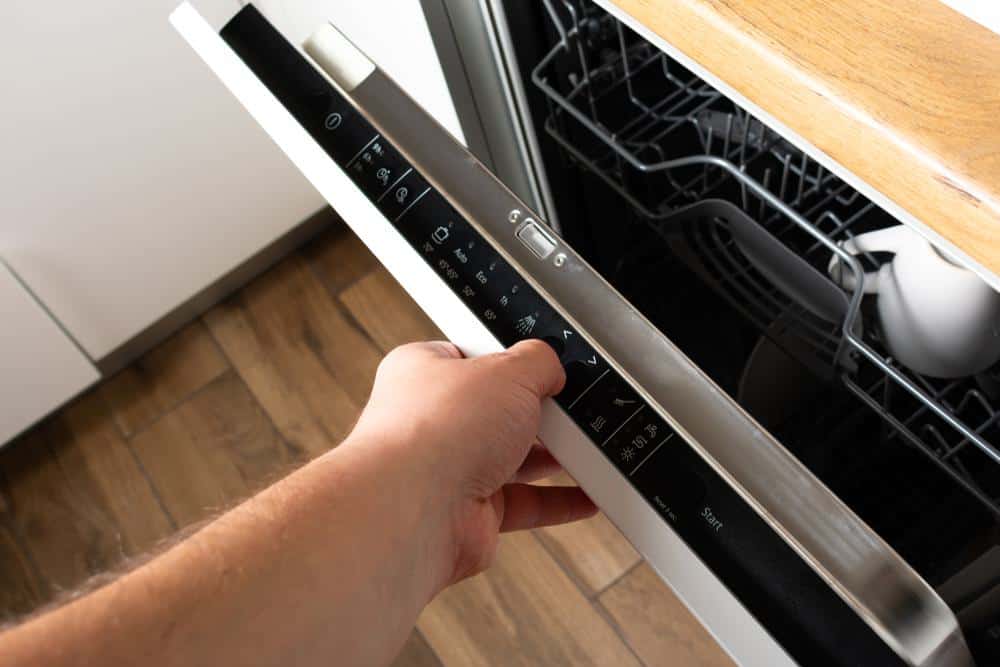
A Whirlpool dishwasher offers a variety of cleaning cycles to tackle the different types of messes that can accumulate on your dishes. One of these is the heavy cycle, also known as the heavy-duty or pots & pans cycle. This cycle is designed to clean heavily soiled items such as pots, pans, casserole dishes, and grimy tableware using extra water and higher temperatures. But how long does this heavy cycle take, and what factors can affect its duration?
The heavy cycle on a Whirlpool dishwasher typically lasts anywhere from 2.75 to 4 hours on average. However, the exact duration can vary depending on factors such as the specific model of the dishwasher, water temperature, and soil level of the dishes.
Average Duration of the Heavy Cycle
The duration of the heavy cycle can vary depending on the specific model and features of your Whirlpool dishwasher. On average, it can last anywhere from 2.75 to 4 hours. However, it’s important to note that factors such as water temperature, soil level, and dishwasher model can affect the cycle time.
Heavy Cycle Vs. Other Cycles
The main differences between the heavy cycle and other cycles are the amount of water used, the water temperature, and the duration of the cycle. For example, the normal cycle is recommended for daily use with normally soiled dishes, while the quick wash cycle is designed for faster cleaning using slightly more water and energy. In contrast, the heavy cycle is specifically designed for cleaning heavily soiled items that require more intensive cleaning.
Best Items for Heavy Cycle Cleaning
The heavy cycle is best for cleaning heavily soiled items such as pots, pans, and casserole dishes with baked-on food and grime. This cycle uses extra water and higher temperatures to effectively remove tough stains and residue from these types of dishes. However, it’s essential to ensure that the items you place in the dishwasher are dishwasher-safe before using the heavy cycle.
Heavy Cycle Duration Variations Across Models
Some Whirlpool dishwasher models with a heavy cycle include: 1. WDF330PAHS – Heavy-Duty Dishwasher with 1-Hour Wash Cycle 2. WDF330PAHW – Heavy-Duty Dishwasher with 1-Hour Wash Cycle 3. WDF330PAHT – Heavy-Duty Dishwasher with 1-Hour Wash Cycle 4. WDP370PAHW – Heavy-Duty Dishwasher with 1-Hour Wash Cycle
The duration of the heavy cycle may vary depending on factors such as the dishwasher model, design, motor power, and cleaning technology.
Energy Efficiency Considerations
When using the heavy cycle, several energy efficiency considerations should be taken into account. These include the installation of energy-efficient equipment, optimization of production processes, retrofitting with more energy-efficient technologies, digitalization, building design, building envelope selection, life-cycle analysis, and the use of energy-efficient materials.
How to Run a Heavy Cycle
To set a Whirlpool dishwasher to run a heavy cycle, ensure the dishwasher is properly loaded, select the “Heavy” cycle on the control panel, add any additional options if desired, and press the “Start” or “Start/Resume” button to begin the cycle.
Troubleshooting Common Issues
Common issues users may face when using the heavy cycle include the dishwasher not cleaning dishes properly, not draining at the end of the cycle, not starting or operating, stopping mid-cycle, and not running on normal or heavy-duty cycles. These issues can be resolved by cleaning filters, checking for clogs or damage, ensuring the control lock is off, resetting the dishwasher, or seeking professional assistance.
Other Cycles Available
In addition to the heavy cycle, Whirlpool dishwashers also offer high temp, normal, quick wash, delicate, sanitize, soak & clean, rinse only, and eco-friendly cycles. Not all Whirlpool dishwasher models may have all of these cycles and options, so refer to your specific model’s user guide for more information.
In conclusion, the heavy cycle on a Whirlpool dishwasher is a powerful tool for tackling tough, baked-on food and grime. Understanding its duration and how to use it effectively can help you get the most out of your dishwasher and keep your dishes sparkling clean.
Frequently Asked Questions
How can I reduce the duration of the heavy cycle on my Whirlpool dishwasher?
Unfortunately, the duration of the heavy cycle cannot be reduced as it is designed to provide a thorough and intensive cleaning for heavily soiled items. However, if your dishes are not heavily soiled, you can consider using the normal or quick wash cycle, which generally take less time.
Can the heavy cycle damage my dishes?
The heavy cycle is designed to clean heavily soiled dishes using extra water and higher temperatures. It’s essential to ensure that the items you place in the dishwasher are dishwasher-safe. Delicate items or those not resistant to high temperatures may be damaged.
How often should I use the heavy cycle on my Whirlpool dishwasher?
The frequency of using the heavy cycle depends on your needs. If you often cook meals that leave your pots and pans heavily soiled, you may need to use it more often. However, for lighter, everyday dishware, the normal cycle is typically sufficient.
Can I use regular dish soap in my Whirlpool dishwasher during the heavy cycle?
No, you should not use regular dish soap in your dishwasher. Dishwashers require specific dishwasher detergent, which is designed to work with the dishwasher’s spray jets and hot water temperatures. Regular dish soap can produce too many suds and potentially damage the machine.
What happens if I select the heavy cycle but the dishwasher is not full?
If you select the heavy cycle but the dishwasher is not full, the cycle will still run for the same duration and use the same amount of water and energy. To conserve water and energy, it’s best to run the dishwasher when it’s full. However, make sure not to overload it as this can affect cleaning performance.












